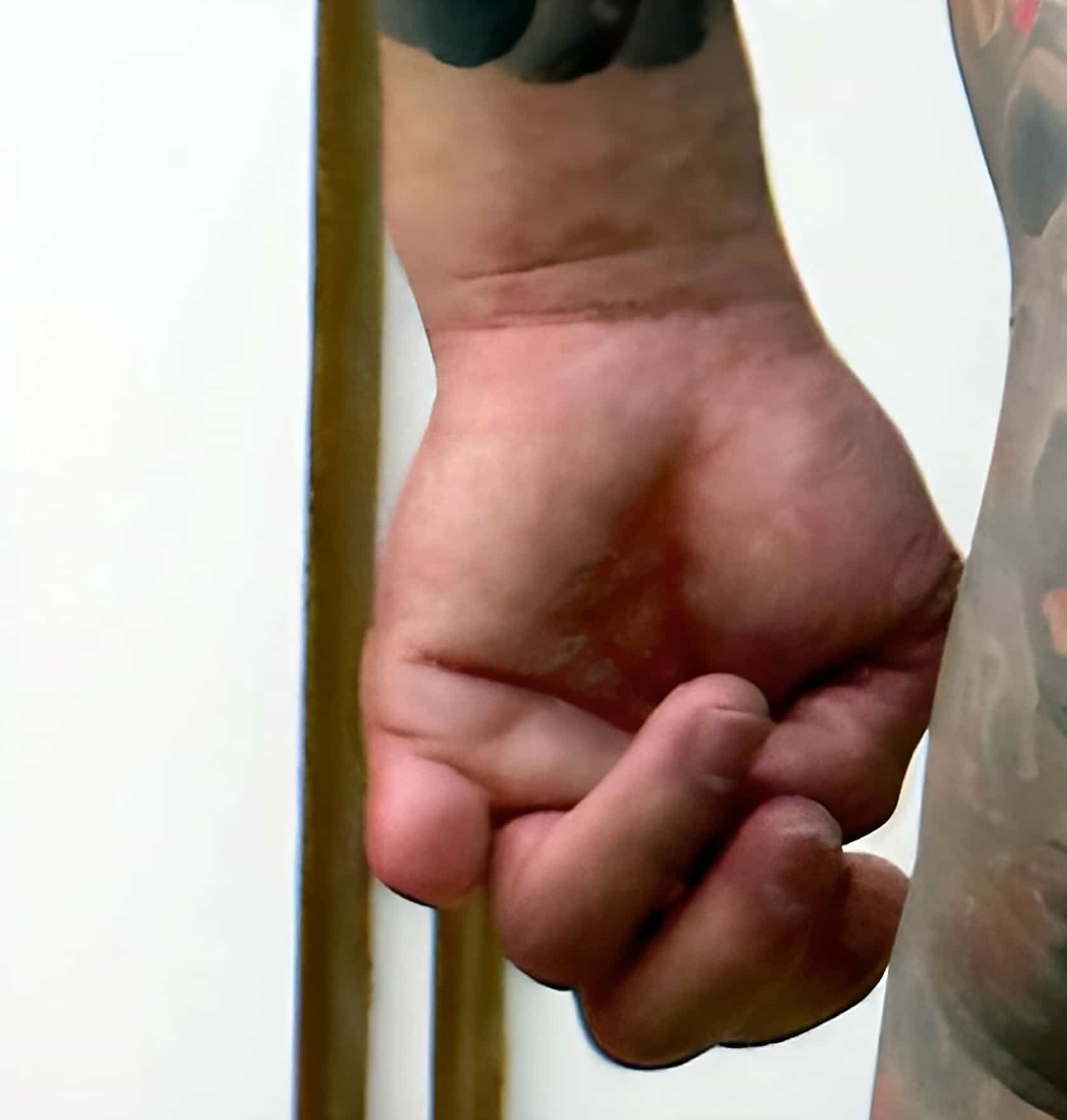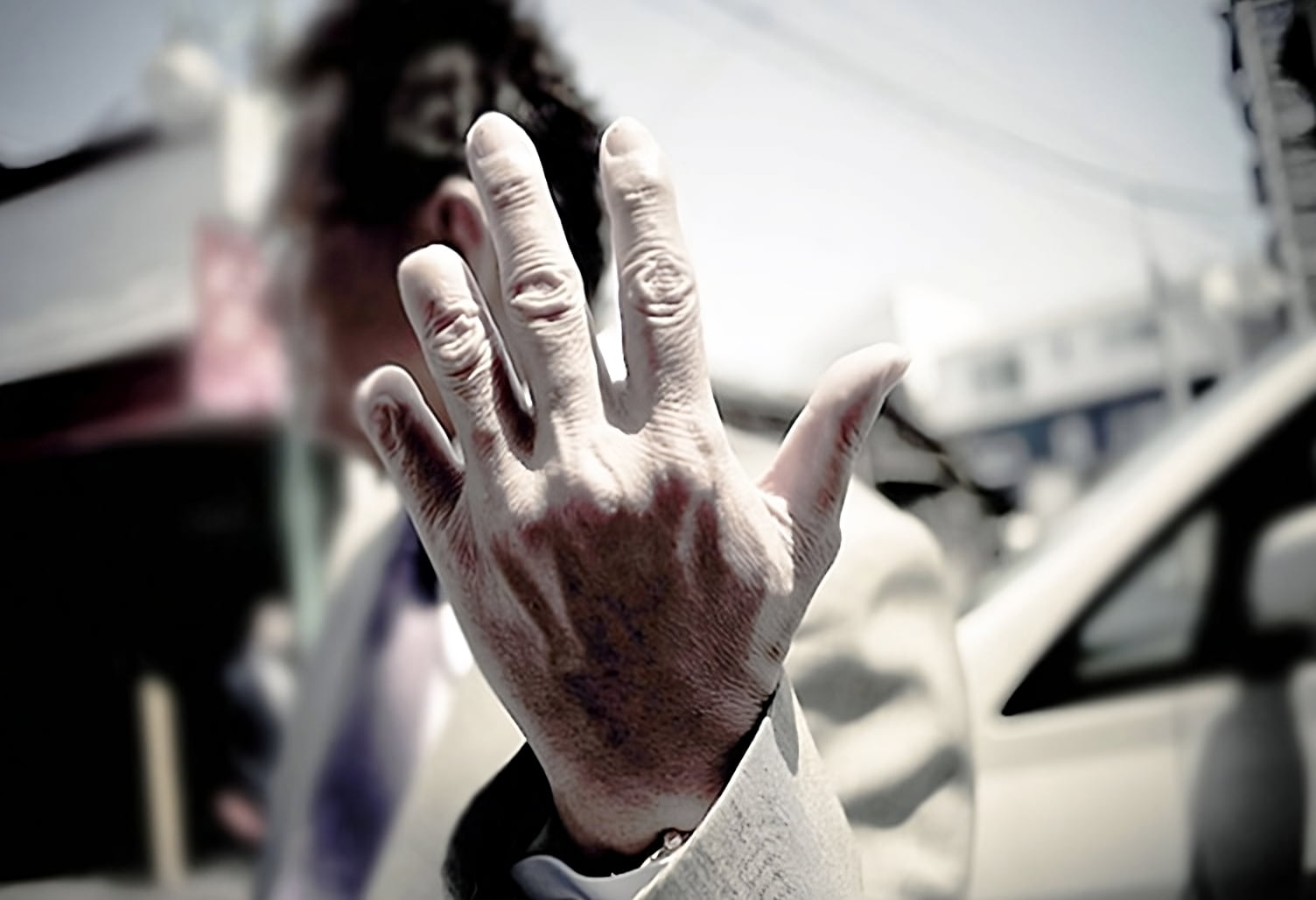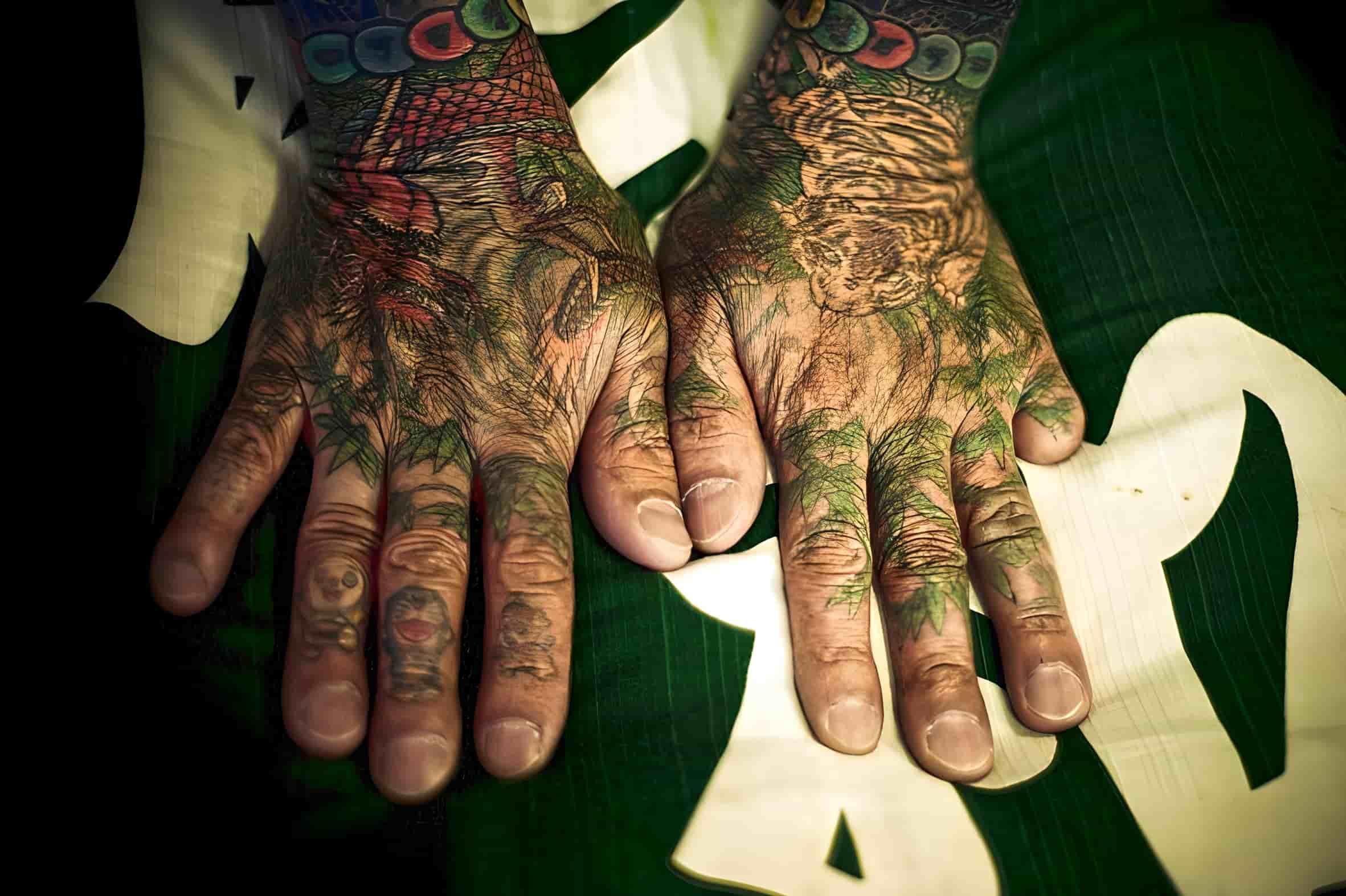Yubitsume (“finger shortening”) is the act of amputating a finger with a sharp knife or tantō. This gesture of remorse, protest, or apology is commonly seen among Japanese gang members such as the Yakuza. The ritual is also known as otoshimae. Yubitsume involves decapitating the tip of one’s left pinky finger. Wrapping the severed part and presenting it to the immediate superior, known as an oyabun, is the next step. If the offenders persist in their wrongdoings, further amputations may be made until they have no pinky finger remaining. After that, the right pinky is up next.
Origin of Yubitsume
The yubitsume originated in the Bakuto, an 18th-century gambling gang that served as a forerunner to the Yakuza. Losing one’s little finger was viewed as a fair substitute for being unable to pay off a gambling debt. Since the little finger is the strongest on the hilt of the sword in Japanese swordsmanship, losing it would have made the person or samurai weaker in battle and more reliant on the protection of a superior like Bakuto or Yakuza.
Names like “Ichika” show that gang members often treat each other like pseudo-families. Since they are not a true family, any sign of devotion must be greeted with an equal and opposite demonstration of love. This demonstration must be done in a “visible” way, just like this ritual. Historically practiced only by the Yakuza, yubitsume has since given way to the more common practice of paying hefty fines.
History of Yubitsume

Yubitsume, also called “yubi o tobasu” or “finger flying,” is a self-harming ritual that has been used as a promise sign since ancient times. But the oldest known reference to Yubitsume is from the early 17th century, during the Edo period (1603–1867).
Having one’s fingers severed as a pledge is depicted in the Japanese poet Ihara Saikaku’s “Budo Denraiki,” wherein a man named Shushudayu Izumikawa, who suspected his wife of adultery, stripped her naked and severed her fingers, stating, “If you do not have a secret husband, you must let go of the five fingers by yourself in the oath of all deities.”
Prostitutes in the Yoshiwara district were known to demonstrate their “single-mindedness” by severing their own pinky fingers and sending them to their patrons.
There have been instances where a finger made of rice flour (shinko) or the finger of a decapitated man was sent to the patron under the guise of the person’s own finger. An established prostitute (oiran) criticized such conduct as “unfashionable” and said, “If you want to leave, just leave.” Desperate whores who knew they would never be pledged to a man would swear allegiance to the man they were with or to the man they later fell in love with.
Implementation of Yubitsume

To perform yubitsume, typically the left hand is positioned on the chopping block with the side of the palm facing down. A topical anesthetic or cold water is used to dull the finger before it is amputated. After that, the finger is amputated from an individual joint. Now the proprietor uses a tantō or other sharp knife to personally sever the finger.
In most cases of yubitsume, only the ring finger and little finger will be removed. Based on the severity of the offense, the finger may be removed just above the joint or the entire foremost phalanx may be severed. Finally, a towel is used to present the cut finger to the insulted party’s head (oyabun) with the utmost respect.
Repeat offenders have the next pinky finger joint removed. If one pinky finger is already gone, the right pinky or the top phalanx of the left ring finger can be amputated as well. Many times, the first phalanxes to be removed are the ones closest to the top in order to keep the hand from becoming useless.
Yubitsume has devastating consequences. In addition to the obvious pain and trauma, losing a finger completely changes one’s professional and personal life. It can be seen as an indication of frailty or treachery in the yakuza and, as a consequence, lead to a fall in social standing.
While tantōs, typical short blades, were frequently used for yubitsume in the past, hammers and chisels eventually became the tools of choice. But yubitsume is associated with high rates of bleeding, infection, and permanent impairment or deformity. Now, a fine has often taken the place of this kind of ceremonial self-mutilation.
The Purpose of the Yubitsume Ritual

To keep up their samurai image, the Yakuza still cut off fingers as part of the ritual. Each phalanx of the finger represents atonement for a mistake. But a yakuza still has to perform hara-kiri for a major wrongdoing.
Reflection
The yubitsume ritual was created by Japanese gangs as a punishment for their members who had disobeyed the rules of the organization. The ratio of yubitsume is usually “three sun and three bu” which is 1.31 inches or 3.33 cm.
Up until the Shōwa period (1926–1989), Japanese swords were the primary tool of choice for gangs. As a punishment, amputating the little finger reduced one’s hold on the handle of the sword significantly. The yubitsume implies deep remorse to the extent that you offer your opponent what is important as a Yakuza.
Another fact about the ritual is that no matter how much they cut, the gang members never use more than three fingers of their dominant hand. This is to leave the rest of the fingers for things like chopsticks and pencils.
One Yakuza member testified in 2015 that they would perform yubitsume if they were out of money. And since they can get stitches right away, the hospital roofs were a convenient place to perform the ritual. The former members also testified that the fingers were stored in glass bottles with formalin.
Arbitration
Sometimes a person can perform yubitsume in order to show one’s earnestness, resolve a situation the person is not personally responsible for, or bring peace between warring gangs. The term “living fingers” is used to describe the fingers amputated for this goal. This is as opposed to “death fingers,” which are cut as a sign of remorse.
Protest
In Japan and Korea, far-right and nationalist groups favor yubitsume as a way of protesting. The Koreans employed yubitsume in the past to oppose the annexation of Korea by Japan. In the present, yubitsume was used in the movement to protest the creation of Takeshima Day. The ritual is also used for lawmakers seen as anti-Japanese.
As a form of protest, severed fingertips are sometimes delivered to the protest site.
Is Yubitsume Still Performed Today?

Today, the gangs, including the Yakuza, don’t perform yubitsume as often as they used to. Because swords are no longer used in fights, it does little good to leave a person disabled and still expect them to do their jobs at their best. The ritual is still considered a serious action in the eyes of gang members. Because of that, the person who committed yubitsume must always be forgiven by his boss.
Today, a person who has violated a gang rule will sometimes willingly subject themselves to yubitsume as a sign of regret in the hopes that they will be spared a more severe penalty than finger cutting.
According to police data from 1971, at least one finger joint was missing from 42% of bakuto, 45% of gurentai, and 30% of tekiya members. In 1994, statistics from the police database showed that this figure had fallen to 33%. The practice of yubitsume is fading away among today’s gangs. They are increasingly relying on monetary sanctions to convey the idea of shame.
The Reasons for the Decline in Yubitsume
The yubitsume is now halfway out of use as a means to resign from a gang group or to show regret, as stated above. This is in part because it is banned by the Anti-Boryokudan Law and other laws.
The decline of yubitsume might be caused by the strengthening of police rules under the Anti-Gang Legislation but also by the collapse of the inflated economy, which has had a significant impact on criminal groups. Since cutting a finger does not bring in a cent, yubitsume has been increasingly replaced by making a compensation payment to the gangs. This is surely more lucrative than cutting a finger.
Finger Prostheses
In order to conceal their Yakuza membership, many Yakuzas today use prosthetic fingers. Japanese gangs like the Yakuza can request yubitsume from people who want to leave the organization. And to better reintegrate into society, former Yakuza members often attach caps or prosthetic fingers to their amputated fingers. And more recently, it has become possible to have the cut fingers surgically transplanted.
Many members (both current and retired) of the Yakuza sport artificial fingertips to avoid drawing notice and scorn in their civilian lives after being given yubitsume upon leaving the organization. Approximately $2,700 is required to purchase a wax prosthesis that is made to look as realistic as possible. Hair from the client’s other fingers is also used if the absent joint is hairy. A prosthetist can complete a finger phalanx in as little as five working hours after an imprint is taken.
Is Yubitsume Legal?
Boryokudan (“violence group“) is commonly referred to as the Yakuza, and Sections 20 and 21 of the Anti-Boryokudan Law (Anti-Gang Legislation) make it illegal for boryokudan members to force other gang members into yubitsuming themselves. This includes providing tools for the ritual. The ritual makes it more difficult for the victims to quit the gang or rejoin society.
In the past, former gang leaders who were found to have forced less powerful gang members to do yubitsume were arrested on charges of harm or intimidation.
A member of a named organized crime group, such as the Yakuza, who coerces others to yubitsume themselves may be issued a stop and desist order by the Public Safety Commission. The violators of the law face a maximum of one year in jail and/or a punishment of up to 500,000 yen ($3,700).
In 1993, when the Japanese government conducted an inspection, they found that about 45 percent of Yakuza members had done yubitsume. Furthermore, 15 percent of participants repeated the routine at least twice. Yubitsume is not only practiced by outlaws but also by regular members of society. Geisha Chish Takaoka severed her middle finger out of loyalty to her lover in 1915. From then on, she was known as the “Nine-Fingered Geisha.”
Yubitsume in Popular Culture

Yubitsume in Literature
- In the novel Neuromancer by William Gibson, 1984
- In the novel Kamikaze by Canadian author Michael Slade, 2006.
Yubitsume is a common theme type in Yakuza-eiga (Yakuza films) and the following Western movies and TV shows:
- The Yakuza by Sydney Pollack, 1974.
- Black Rain by Ridley Scott, 1989
- The Outsider, 2018
- The Man in the High Castle (season 4, episode 10), 2019
- The British TV series Giri/Haji (season 1, episodes 4 & 8), 2019
- The American TV series Tokyo Vice (several episodes of season 1), 2022
- The American TV series Miami Vice “The Rising Sun of Death” (season 4, episode 9), 1987.
Yubitsume in Video Games
Yubitsume is also commonly encountered in Sega’s popular video game series with the title Yakuza. These video games include 2020’s Yakuza: Like a Dragon and the older Yakuza 0.
Meanwhile, there’s also a dice game called Yubitsume in which players lose a finger for every roll they don’t win.
Miscellaneous Facts About Yubitsume
- Kei Sato’s character, Tokudaiji, in the film “The Wicked Reporter 2,” is a peacemaker who stops fistfights between rival gang members by performing yubitsume on his own fingers.
- The Kansai region of Japan uses the word “yubitsume” to refer to the experience of having a finger trapped in a door or similar object. Stickers reading “Yubizume ni chuui” (ゆびづめにごちゅうい) used to be affixed to the doors of trains in the Kansai region, including subways. However, this term was not widely known outside of the Kansai region.
- There was a widespread shift in the 1980s toward the use of simpler phrases like “Doa ni go chūi” (“Note the door”, ドアにごちゅうい). Kyoto Bus, unlike many other Kansai-region transit firms, continues to use the term “yubitsume” (指づめ) and has no intentions to do otherwise in the foreseeable future.


